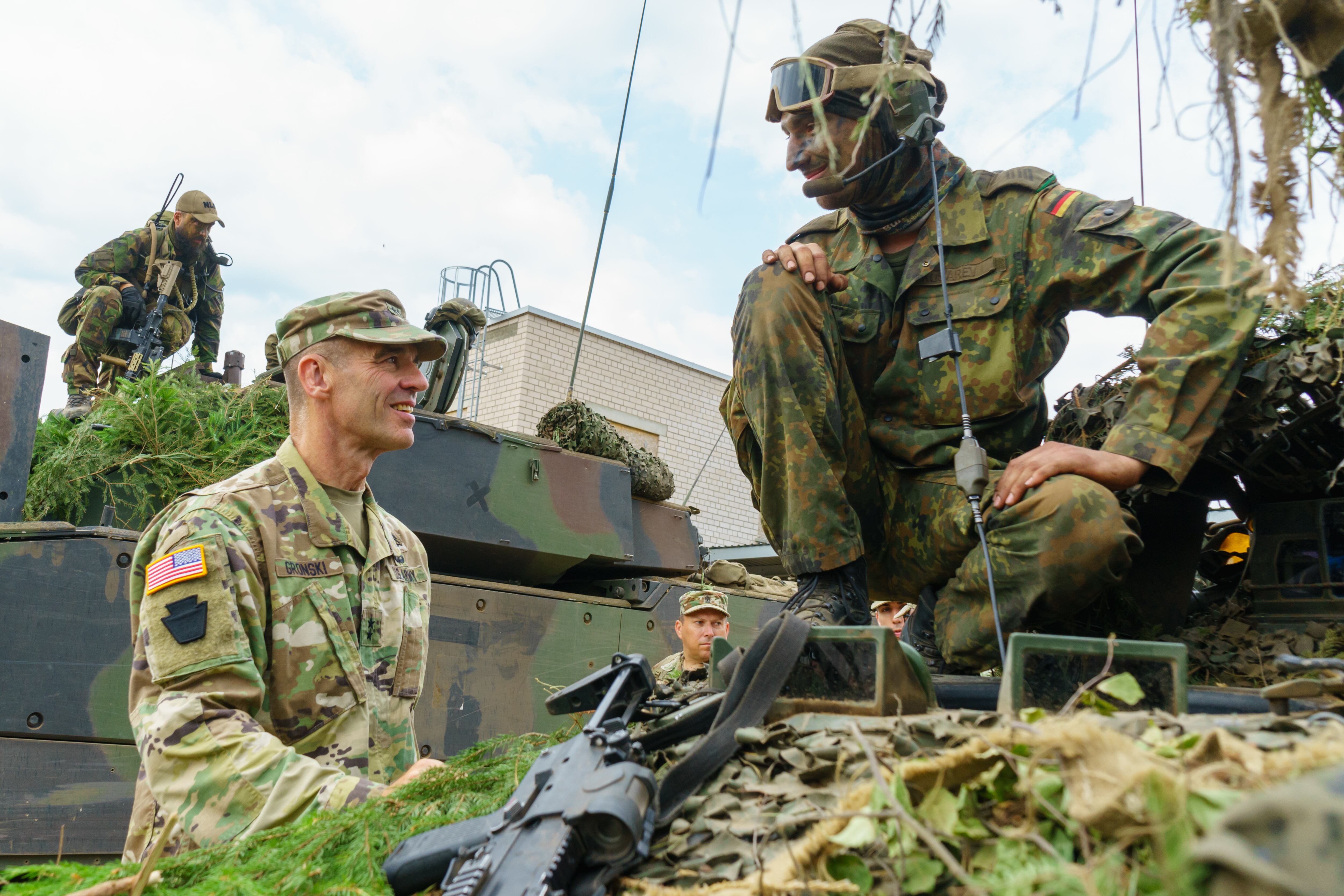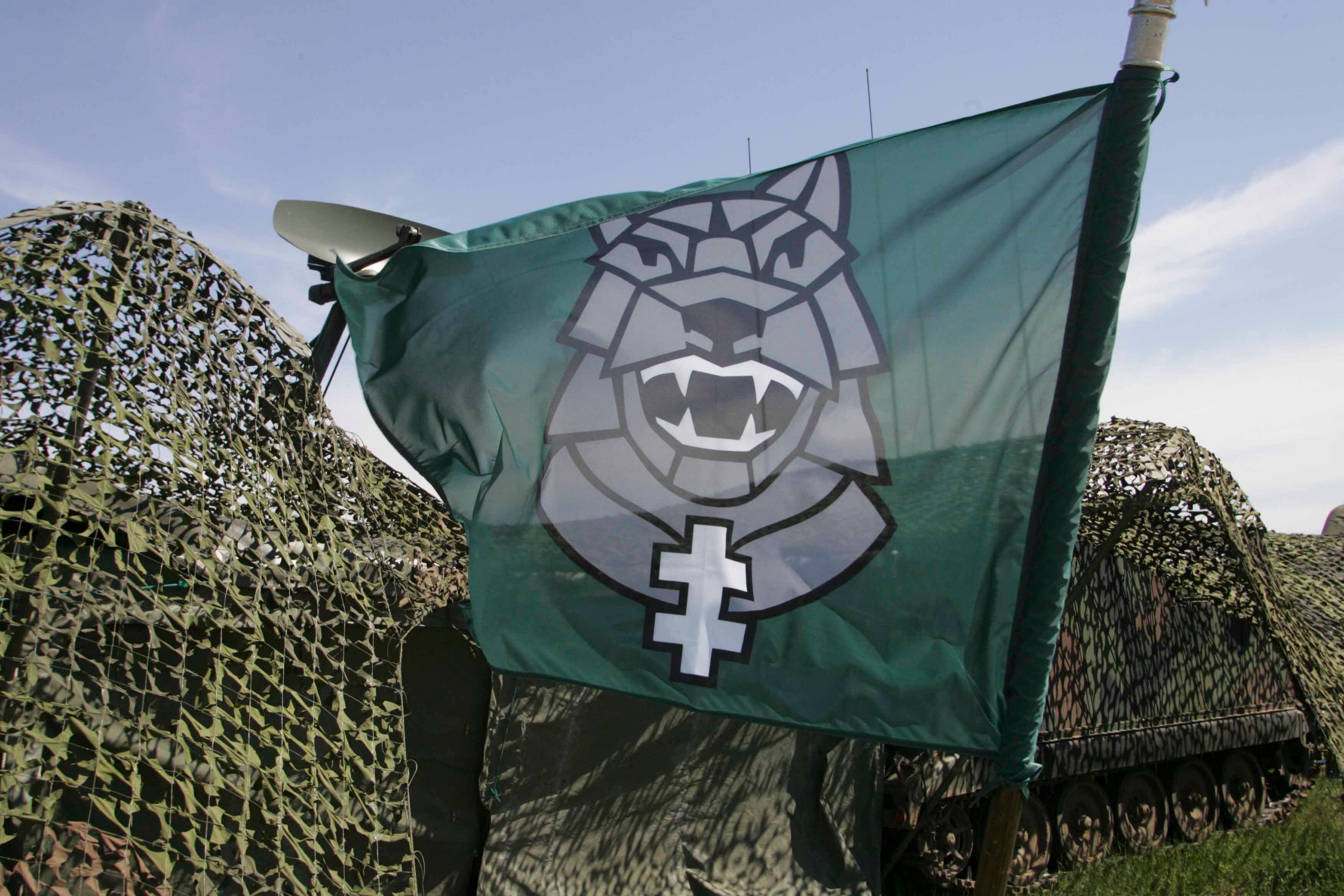ARDEN, Scotland — For an anxious Lithuania staring down the barrel of Russia’s heavily fortified Baltic enclave at Kaliningrad, military officials will relish the rumble of U.S. tanks rolling through the country.
About 500 troops are deploying to new training facilities in the country and will stay through the winter in preparation for the real show: a massive divisional exercise in Europe that will see 20,000 U.S. troops in Europe known as Defender 2020. And while U.S. troops have been rotating through the Baltic, including Lithuania, since 2014, the latest deployments and the forthcoming Defender exercise will bring that presence to new levels.
The troops deploying to Lithuania this October are the 1st Armored Battalion of the 9th Regiment, 1st Division, along with 30 Abrams tanks, 25 Bradley Infantry Fighting Vehicles and 70 wheeled vehicles to the Gen. S.Žukauskas Training Area in Pabradė, about a three-hour drive across Lithuania from the Suwalki border region.
RELATED

Defender, which will strain the beleaguered U.S. logistics system, will move thousands of U.S. troops from forts in the United States to sealift ships that will take them to Europe, testing investments in European security made since Russian President Vladimir Putin’s annexation of Crimea.
For Lithuania’s defense officials, this movement of U.S. troops to Europe means a chance to forge a new kind of deterrent in the Baltic by creating a corridor of security partnerships spanning from a new rotational presence in Europe through the Baltic region, challenging Putin’s buildup there.
“The geopolitical situation in the region, it hasn’t changed,” Giedrimas Jeglinskas, Lithuania’s vice minister of national defense, said in an interview with Defense News. “For us this is a great thing. We see that the U.S. is in the region, and U.S. presence is the biggest deterrent that we could ever hope for. We’ve said for a long time that we want U.S. soldiers on our soil — and we can argue about whether its permanent rotational forces or a permanent rotation — but the fact is that they are there.”
Lithuania, a country of 3 million, suffers from an uncomfortable geography. A 40-odd mile stretch of its shared border with Poland makes up the Suwalki Gap, a strip of land that separates Russia from its Kaliningrad outpost and friendly Belarusian territory. A NATO members, Lithuania and Poland have become focal points of renewed tension between NATO and Russia, with the Suwalki corridor one of the most likely battlefields if conflict broke out.
But with the deployment of troops to both Poland and Lithuania, the alliance has a stronger hand than it has had in years. And despite tensions running high between the Trump administration and NATO, for Jeglinskas, the proof is in the pudding.
“At the end of the day we have a deterrent on the ground,” he said. “If you look at [a] map, there is Poland and Lithuania and the Suwalki corridor. And we will have the U.S. to the east and west of that corridor.
“I think it shows we are being heard. It shows that whatever the rhetoric may be, on the ground we see a lot more U.S. presence. I think it’s a great sign.”
For Jeglinskas, a former infantry platoon commander in the Lithuanian Armed Forces, the buildup of U.S. troops in the region is a chance to create, through regional cooperation, a kind of training and maneuver corridor that gives the U.S. and NATO forces the ability to come to Europe and “not just spend readiness but create readiness,” he said.
RELATED

“With the U.S. more established in eastern Poland, what I’m hoping for is that the posture and force generation guys at the Pentagon and in EUCOM [U.S. Europe Command], that they don’t feel like their training area is limited just to Poland,” he said. “My hope is that we — Estonia, Latvia, Lithuania and Poland — can all become this broader, larger training infrastructure ecosystem."
For Jeglinskas, the focus has been making sure that when U.S. troops deploy to Lithuania, they can make the time meaningful and not just a token show of force.
“From our side we want to help out with logistics and provide the kind of training infrastructure in Lithuania so that when they arrive, they don’t just sit there,” he said. “They can do fire and maneuver. There is a lot of infrastructure that we’ve built out both with our own money and with European Deterrence Initiative Fund allocated by EUCOM for this project.”

‘Size does matter’
While the U.S. deployment of 500 troops this October is welcome, ultimately 500 troops won’t stop Putin if he were to make a move on Lithuania or the Suwalki Gap, a prospect Moscow rejects as Western paranoia despite Russia’s previous military activity in Georgia and Ukraine.
The threat has sent Lithuania requesting U.S. assistance and sharpening its focus on building its own defenses.
“We value the U.S. soldiers on our soil, but size does matter eventually. It’s not only that they are there but that it’s a real capability,” he said. “And we’re investing a lot in this ourselves in building that capability.”
To that end, Lithuania has expanded its three main brigades — a motorized brigade, mechanized brigade and a light infantry brigade — that they’ve augmented with conscripts.
RELATED

“These are significant units for our budget, for our population. We’re a small country: Just 3 million people, and having those three brigades — manning them, equipping them, providing weapons, ammunition and sensors — it’s a lot, but we’re doing it.”
The country hit the NATO goal of spending 2 percent of gross domestic product on defense last year, Jeglinskas said, and more spending is on the way.
“The political parties have committed to 2.5 percent by 2030,” he said. “Now of course it varies from year to year, but it’s our job to make sure the public, the people, the parliamentarians are all aware of the situation: The fact that we reached 2 percent doesn’t, in and of itself, make us more capable. The real capability will be investing that 2-2.5 percent every year over a long period of time.”
Lithuania is also poised to buy up to 500 of the American Joint Light Tactical Vehicle, with the first tranche to include 200 JLTVs and more after, Jeglinskas said
One area of need will have to wait, however, because it is cost-prohibitive: advanced air defense. While the Lithuanians have intermediate air defense, something more akin to the U.S. Patriot system is badly needed, something Poland is purchasing.
“We would love to have Patriot,” Jeglinskas said. “Our air defense is one of the weak areas in the Baltic, and NATO is aware of this.”
“Would I love to have U.S. Patriot batteries to come and operate in the Baltic? Yes, but we also understand the shortage of those assets. The Poles are buying it, they are a much bigger country and they can afford to. But of course we will connect our mid-range air defense with theirs, but overall there are certain things that are just out of reach.
“But we need to have it because Kaliningrad is a very heavily militarized area.”
David B. Larter was the naval warfare reporter for Defense News.








